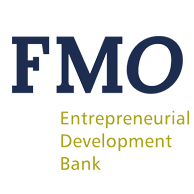Development organisations, corporates and investors need to acknowledge that different geographical regions have their own preferred energy agenda and way of working, according to speakers at FMO’s ‘Making Solar Bankable’ conference.
Asia
David Russell, Partner and Group CEO of Equis Energy, said solar energy provision in Asia is growing three to four times faster than in Europe and five times faster than in the US. Some US$2.2 trillion is expected to be invested in renewable energy in Asia in the next decade, and the region is critical to effecting climate change solutions.
“Returns here are attractive but impressions can be misleading,” Russell said. “There is more funding going into India than any other country, but we make the most in Japan. There are also fundamental issues that need to be addressed in approval processes.” Equis has 180 projects across Asia. It is the largest renewable energy operator in Asia-Pacific, and the leading provider in Japan, Indonesia, Taiwan, Philippines and Australia. It is in the top five providers in Thailand and the top 10 in India.
In contrast to most international companies, Equis is committed to building its own teams from the ground up, rather than finding an existing local partner. “What we have found is that you have to be in control of your projects,” Russell explained. “And the best way to add value to your company is to grow your own team, source all the deals yourself and retain decision-making.”
The other key to successful operations is to ensure meaningful community involvement around each project. “You have to own the community relationship to be in control. If you look after your local community, they will support you.”
Africa
Africa has vast potential to absorb solar energy provision, but debate continues as to whether it should focus on large-scale projects or micro grids. Ato Gyasi, Senior Director of Investments at the Lagos-based Africa Finance Corporation (AFC) said the continent’s greatest need right now is industrialisation.
Energy solutions vary across the North, West, Central, East and Southern Africa regions but governments everywhere want to expand base load, despite the process risks involved. Gyasi said solar grids are more visible in East Africa and awareness of their potential is growing elsewhere. “Tariffs are going down, and we expect to see an increase in off grid systems, but these smaller networks will not fundamentally change Africa. How to scale up business models is the real challenge, as well as how to get access to deep funding.”
Latin America
In Latin America, there is strong demand for renewable energy, but solar is not often the preferred solution. Capacity has increased slowly in recent years in comparison with other regions: six years ago, there was no solar at all. That is starting to change as countries like Honduras, especially, accept solar projects. But for Argentina, Chile and Brazil the projections around solar don’t change much in the next two or three years.
“It is difficult to get solar onto the grid in many countries,” noted Jay Gallegos, General Director Wind and Solar at CMI Energia. “There are opportunities in Central America, for example, but there is a lot of uncertainty about what tech to adopt and concern at the aggressive bids evident in the energy auctions. How can these companies remain competitive at these prices? Mexico is a undoubtedly a big opportunity, but will it be ultimately profitable?”
Investors are most concerned about off-taker risks, payment issues and the agreement over the legal definitions of key contractual terms, alongside social and political risks. A poll taken amongst the 500 delegates to the conference found that Asia is considered the region offering the most potential in the mid to long term, followed by Africa, with Latam trailing by some margin.

